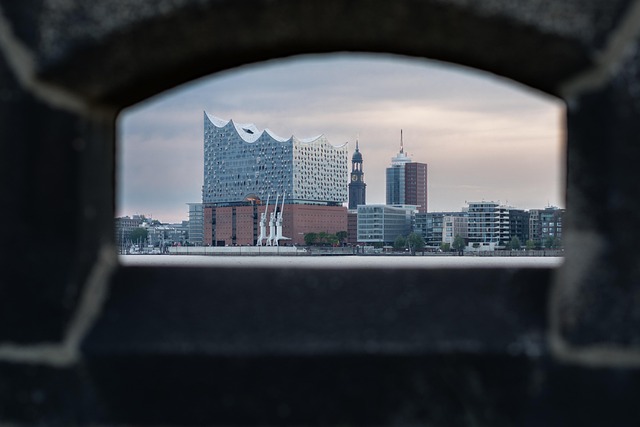Shaheed Millat Road, a historic thoroughfare in Karachi, is a vibrant commercial and cultural hub connecting east and west. Despite traffic congestion and poor road conditions, it remains crucial for economic activities and urban navigation. To ensure Karachi's continued vibrancy, strategic planning is needed to improve infrastructure with widened lanes, public transport, green spaces, and sustainable initiatives.
Shaheed Millat Road, a vital artery in Karachi, is more than just concrete and asphalt; it’s a lifeline connecting communities and driving economic activity. This article delves into the history and development of this key route, revealing its role as a bustling thoroughfare in Pakistan’s largest metropolis. We explore current traffic patterns, their impact on residents and businesses, and gaze towards future improvements in Karachi’s road infrastructure. Understanding Shaheed Millat Road is understanding the heartbeats of modern-day Karachi.
- Understanding Shaheed Millat Road in Karachi
- Historical Background and Development of the Road
- Current Traffic Patterns and Challenges
- Impact on Local Businesses and Residents
- Future Improvements and Planning for Karachi's Road Infrastructure
Understanding Shaheed Millat Road in Karachi

Shaheed Millat Road, a pivotal artery in the heart of Karachi, is a bustling thoroughfare that connects diverse neighborhoods and commercial hubs. This major road stretches across the city, serving as a vital link between eastern and western Karachi. It is named after Shaheed Millat, a prominent figure in Pakistan’s freedom struggle, reflecting the historical significance embedded within its boundaries.
In the vibrant metropolis of Karachi, Shaheed Millat Road stands out for its chaotic yet dynamic atmosphere. The road is a symphony of bustling businesses, lively markets, and a diverse range of pedestrians. It is not just a route but a cultural and economic lifeline, where locals engage in daily routines and tourists explore the city’s rich tapestry. Understanding this road is essential to navigating Karachi’s complex urban landscape.
Historical Background and Development of the Road

Shaheed Millat Road, a pivotal transportation artery in Karachi, Pakistan, boasts a rich historical background intertwined with the city’s growth and development. Established several decades ago, this thoroughfare initially served as a modest connection between key neighborhoods, reflecting the organic evolution of urban infrastructure. Over time, it has transformed into a bustling corridor, symbolizing the metropolis’ expansion and burgeoning population.
The road’s development aligns closely with Karachi’s historical trajectory. As the city expanded, so did its demand for efficient transportation networks. Shaheed Millat Road emerged as a strategic link, facilitating movement and commerce, and reflecting the dynamic nature of urban planning in the vibrant port city. Today, it stands as a testament to Karachi’s relentless progress, continuing to play a vital role in connecting communities and fostering economic activities across the metropolis.
Current Traffic Patterns and Challenges

Karachi’s Shaheed Millat Road, a bustling artery connecting the heart of the city with its suburbs, experiences distinct traffic patterns that reflect the metropolis’s dynamic nature. During peak hours, the road becomes a hive of activity as commuters from various neighbourhoods converge, creating a complex web of vehicle movements. The primary challenge lies in managing this dense traffic flow while ensuring smooth transportation.
Navigating Shaheed Millat Road requires careful consideration due to its narrow sections and heavy congestion at intersections. Local authorities have implemented traffic signals and one-way lanes to alleviate the situation but the constant stream of vehicles, especially during rush hours, often leads to delays and frustration for drivers. Despite efforts to improve road conditions and enhance traffic management, challenges persist, underscoring the need for continuous evaluation and innovative solutions tailored to Karachi’s unique urban landscape.
Impact on Local Businesses and Residents

Shaheed Millat Road, a vital artery in Karachi, significantly influences the city’s economic vibrancy and the daily lives of its residents. Local businesses thrive due to the high foot traffic, making it a bustling hub for retail and services. However, poor road conditions can pose challenges. Potholes and uneven surfaces not only damage vehicles but also deter customers, particularly during inclement weather. Residents often face delays and increased travel times, impacting their ability to commute to work or access essential services. The decline in road quality has led to a decrease in local trade and a sense of frustration among businesses and residents alike, highlighting the urgent need for maintenance and improvements.
Future Improvements and Planning for Karachi's Road Infrastructure

Karachi, as Pakistan’s economic hub, requires a robust and efficient road infrastructure to cater to its growing population and bustling economy. Future improvements on Shaheed Millat Road, one of the city’s vital arteries, should focus on enhancing capacity and connectivity. This can be achieved through strategic planning that includes widening existing lanes, introducing dedicated traffic lanes for public transport, and implementing smart transportation solutions like digital signage and real-time traffic monitoring systems.
The long-term vision should also incorporate sustainable practices, such as incorporating green spaces along the road to mitigate pollution and improve the overall quality of life. Additionally, integrating pedestrian and cycling facilities can promote non-motorized transport options, reducing congestion and carbon emissions. Such planning ensures Karachi remains a dynamic metropolis while prioritizing the well-being and convenience of its residents and visitors alike.
Shaheed Millat Road, a vital artery in Karachi, has evolved over time, reflecting the city’s growth. Despite current traffic challenges, its impact on local businesses and residents is undeniable. Future improvements, focusing on efficient infrastructure planning, are crucial to enhance mobility and livability in this vibrant metropolis, ensuring Karachi remains a thriving hub.





Leave a Reply